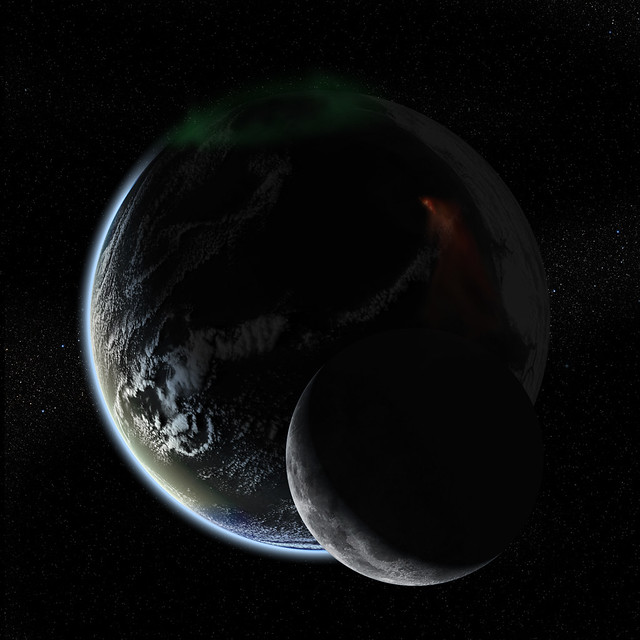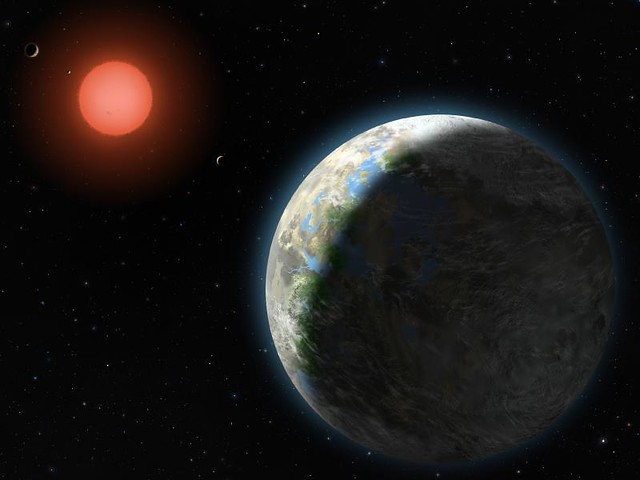Big Bang Monday: Gliese 581g
Monday, November 28th, 2011
Located 20.5 light years away (123 trillion miles), Gliese 581g has a 100% chance of sustaining life. The planet is located in the “Goldilocks” zone, which is considered habitable. If you used a rocket traveling at 1/10 the speed of light (19,000 MPH), it would take 200 years to get there — who has time for that, Dave?
It was announced in September:
A team of planet hunters from the University of California (UC) Santa Cruz, and the Carnegie Institution of Washington has announced the discovery of a planet with three times the mass of Earth orbiting a nearby star at a distance that places it squarely in the middle of the star’s “habitable zone.”
This discovery was the result of more than a decade of observations using the W. M. Keck Observatory in Hawaii, one of the world’s largest optical telescopes. The research, sponsored by NASA and the National Science Foundation, placed the planet in an area where liquid water could exist on the planet’s surface. If confirmed, this would be the most Earth-like exoplanet yet discovered and the first strong case for a potentially habitable one.
To astronomers, a “potentially habitable” planet is one that could sustain life, not necessarily one where humans would thrive. Habitability depends on many factors, but having liquid water and an atmosphere are among the most important.
The new findings are based on 11 years of observations of the nearby red dwarf star Gliese 581 using the HIRES spectrometer on the Keck I Telescope. The spectrometer allows precise measurements of a star’s radial velocity (its motion along the line of sight from Earth), which can reveal the presence of planets. The gravitational tug of an orbiting planet causes periodic changes in the radial velocity of the host star. Multiple planets induce complex wobbles in the star’s motion, and astronomers use sophisticated analyses to detect planets and determine their orbits and masses.
Washington State’s Dirk Schulze-Makuch has a group of scientists working on it.

